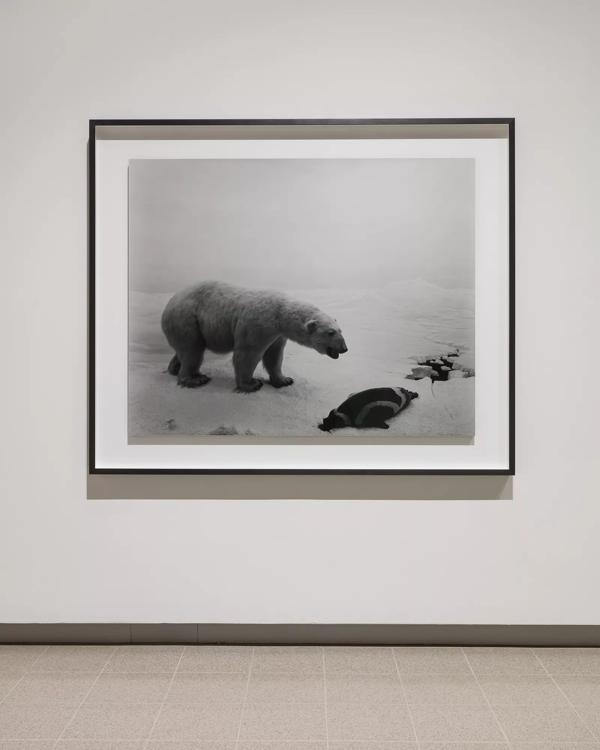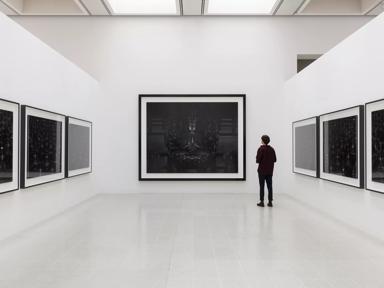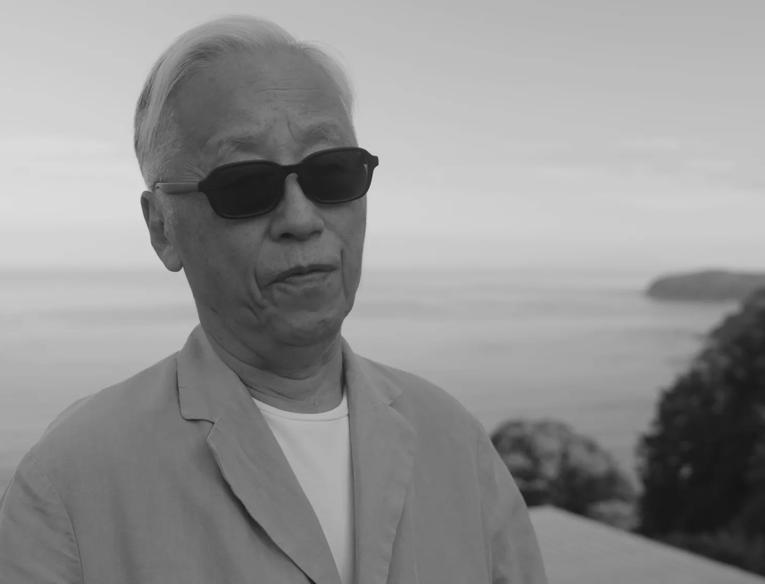Focus on: Dioramas, Hiroshi Sugimoto

The opening room of our Hayward Gallery exhibition, Hiroshi Sugimoto, presented works from the artist’s first photographic series, Dioramas.
After moving to New York City in 1974, Sugimoto visited many of the city’s cultural attractions, including the American Museum of Natural History, famous for its lifelike animal habitat dioramas created by pioneers of modern taxidermy, Robert Rockwell and Carl Akele. In fact, dioramas are considered a precursor to photography itself. These three-dimensional displays were invented by Louis Daguerre, one of the fathers of photography, as a means to present a scene frozen in time.
Sugimoto was fascinated by these displays of stuffed animals before painted backdrops and false foliage. In 1976 he returned to the museum and spent many evenings using his old fashioned large format wooden box camera to photograph the exhibits. Sugimoto was drawn to take pictures of the dioramas not by a desire to merely document them, but to deceive. More specifically, he wanted to explore how in photographs the dead can seemingly come back to life.
To create images that could suggest this result he used black and white film, which imbued these scenes of canned nature with a more plausibly lifelike appearance. And as he would do with several later series, such as Portraits and Chamber of Horrors, Sugimoto removed any sign of the surrounding milieu. The museum environment is never referenced in these images, instead, the resultant pictures immerse us in the speculative scenario of each individual diorama.

Like photographs, dioramas have a memorial quality, in as much as they present images of vanished life. Acutely sensitive to this aspect of their character, Sugimoto noted that on first encountering the dioramas in the American Museum of Natural History, he was overwhelmed by the fragility of existence that they captured.
One of his first works in his Dioramas series was Polar Bear (1976) which depicts a polar bear in an Arctic landscape, paused with its mouth open before a freshly caught seal at its feet. Sugimoto has identified this as a seminal image for him and his career, stating ‘my life as an artist began the moment I saw with my own eyes that I had succeeded in bringing the bear back to life on film’. Like many of his later series, Dioramas reflects how Sugimoto is able to make us question photography’s capacity for truth telling.

The largest survey to date of Hiroshi Sugimoto’s work was at Hayward Gallery, 11 October 2023 – 7 January 2024. Enjoy more articles and videos connected to this exhibition, below.

From internationally acclaimed artists at Hayward Gallery, to pop-up installations, enjoy inspirational art and exhibitions with us.
Header image: Installation view of Hiroshi Sugimoto, Dioramas. Silver gelatin prints. Photo: Mark Blower. Courtesy the artist and the Hayward Gallery.




